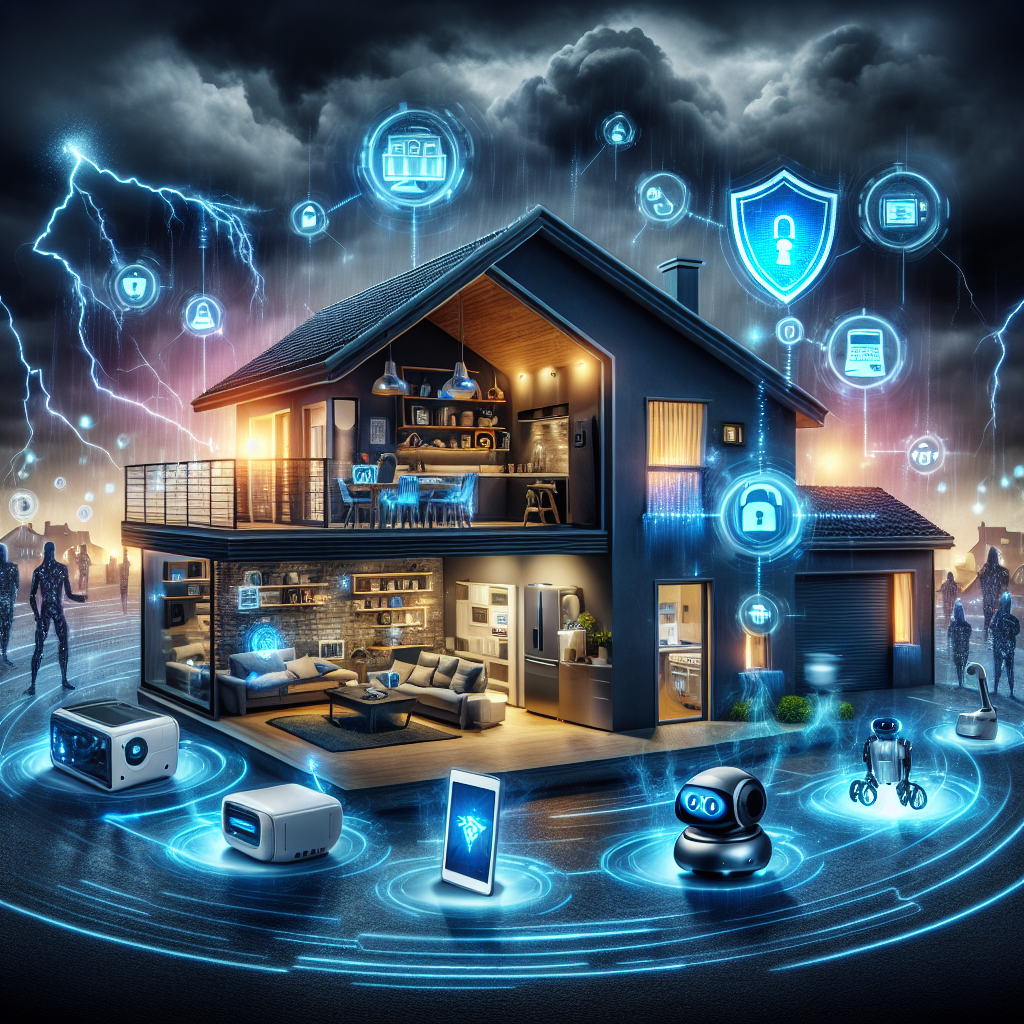Introduction
As home automation systems become increasingly popular, ensuring their security against hacking attempts is paramount. Protecting your smart home not only safeguards your personal data but also ensures the safety and functionality of your connected devices. This article provides comprehensive strategies to secure your home automation systems from potential cyber threats.
Understand the Basics of Home Automation Security
Before implementing security measures, it’s essential to understand the fundamentals of home automation systems and the potential vulnerabilities they may present. Home automation systems often consist of various interconnected devices, such as smart thermostats, lighting systems, security cameras, and voice assistants. Each of these devices can serve as an entry point for hackers if not adequately secured.
Common Vulnerabilities
- Weak Passwords: Using default or easily guessable passwords can make it simple for hackers to gain access.
- Outdated Firmware: Devices running outdated software may have unpatched security flaws.
- Unsecured Networks: An unsecured Wi-Fi network can be exploited to access connected devices.
- Inadequate Encryption: Data transmitted without proper encryption can be intercepted and manipulated.
Implement Strong Authentication Methods
One of the most effective ways to secure your home automation systems is by implementing strong authentication methods. This includes using complex, unique passwords for each device and enabling multi-factor authentication (MFA) wherever possible.
Create Robust Passwords
A strong password should be at least 12 characters long and include a mix of uppercase and lowercase letters, numbers, and special characters. Avoid using easily guessable information such as birthdays, names, or common phrases.
Enable Multi-Factor Authentication
MFA adds an extra layer of security by requiring additional verification steps, such as a text message code or biometric scan, beyond just a password. Enabling MFA significantly reduces the risk of unauthorized access.
Keep Your Devices Updated
Regularly updating the firmware and software of your home automation devices is crucial in protecting against known vulnerabilities. Manufacturers often release updates that address security flaws and improve device performance.
Automate Updates
Whenever possible, set your devices to update automatically. This ensures that you receive the latest security patches without having to manually check for updates.
Monitor for Updates
If automatic updates are not available, establish a routine for checking and installing updates. Staying proactive about updates can prevent exploitation of outdated systems.
Secure Your Home Network
Your home network serves as the backbone of your home automation system. Ensuring its security is essential to protect your connected devices from external threats.
Use Strong Wi-Fi Encryption
Enable the highest level of Wi-Fi encryption available, such as WPA3, on your router to protect against unauthorized access.
Change Default Router Credentials
Routers often come with default usernames and passwords that are widely known. Changing these credentials can prevent hackers from easily accessing your network settings.
Segment Your Network
Creating separate networks for different devices can limit the potential impact of a security breach. For example, keep your home automation devices on a separate network from your personal computers and smartphones.
Utilize Firewalls and Security Software
Firewalls act as a barrier between your home network and the internet, monitoring and controlling incoming and outgoing traffic based on predetermined security rules.
Install a Reliable Firewall
Use a reputable firewall solution to protect your network from unauthorized access and potential threats.
Use Security Software
Antivirus and anti-malware software can detect and prevent malicious activities on your devices, adding an extra layer of protection.
Monitor and Manage Device Access
Regularly monitoring the devices connected to your network and managing their access can help identify and mitigate potential security risks.
Limit Device Permissions
Grant devices only the permissions they need to function. Limiting access rights can minimize the potential damage if a device is compromised.
Conduct Regular Audits
Periodically review the devices connected to your network and assess their security configurations. Removing unused or unsecured devices can reduce your attack surface.
Encrypt Your Data
Encrypting the data transmitted between your home automation devices and your network adds an essential layer of security, ensuring that intercepted data cannot be easily read or altered.
<
Use End-to-End Encryption
Implementing end-to-end encryption ensures that data is encrypted on the sending device and only decrypted by the intended recipient, preventing eavesdropping and tampering.
Secure Cloud Services
If your home automation system relies on cloud services, ensure that data stored and transmitted through these services is encrypted and that you trust the service provider’s security measures.
Educate Yourself and Stay Informed
Staying informed about the latest security threats and best practices is crucial in maintaining the security of your home automation systems.
Follow Security News
Regularly read security blogs, forums, and news sites to stay updated on new vulnerabilities and protection techniques.
Participate in Security Communities
Engage with online communities focused on home automation security to exchange knowledge and learn from others’ experiences.
Conclusion
Securing your home automation systems from hacking requires a proactive and multifaceted approach. By implementing strong authentication methods, keeping your devices updated, securing your home network, utilizing firewalls, monitoring device access, encrypting your data, and staying informed about the latest security practices, you can significantly reduce the risk of cyber threats and enjoy the benefits of a smart, secure home.

